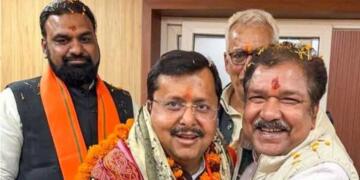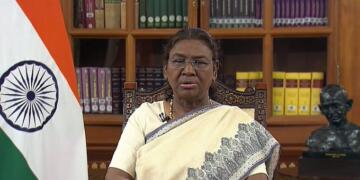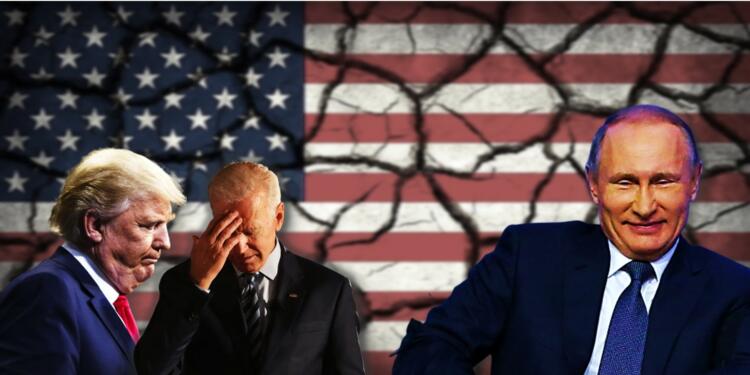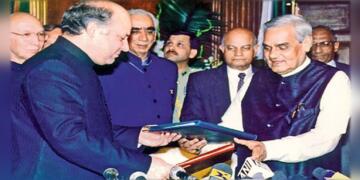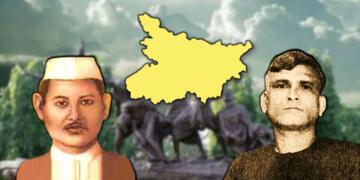There is a reason why the two bloodiest battles of the 20th century were called World Wars. They defined not just their immediate environment, but also upcoming decades. While the first war gave birth to American dominance on the global stage, the second one solidified it. In a bi-polar world of the cold war era, America is perceived to have had the upper hand most of the time. But, the 21st century has turned the tables. In what is arguably termed as Asian Century, the United States is probably at its weakest point in the last 2 centuries.
America’s rise from WWI to 1939
America did the fund raising for the first world war, but It did not actively participate in the war. Even after the war, America kept existing powers in its pocket by providing them money. Though the British were still the kings, the United States eventually turned out to be kingmaker. Proof of the pudding lies in the fact that the Great depression of the 1930s originated in the USA and its trickle-down (negative) effects were felt all across the world.
Despite that the European countries were unwilling to let their reliance on America go down. It’s understandable since profits from their existing colonies had started to die down in the wake of voices for political independence getting louder. A recession affected America was their consolation prize during 1929-39. The recession gave birth to skirmishes. These skirmishes gave birth to fighting between nations and within no time, a full-fledged world war kicked off in 1939.
WWII solidified American hold
The war ultimately helped the US reclaim its position as the financial capital of the world. It funded the war on colossal proportions. Roosevelt was so desperate that he even introduced a bond called war bond to raise money.
To borrow money through bonds, the US government contacted more than 90 per cent of its population. The US government raised a plethora of taxes that include capital as well as labour. At the end of the war, it announced itself as the big daddy of the world by dropping two nuclear bombs on Japan.
Nuclear Bombs were the formal announcement of the rise of America as an empirical power. It was assisted by the decline of the British Empire. White Americans carrying the genes of the British were considered as natural heirs to them. Post colonialism Britain had no option but to play second fiddle. With the kind of small geography it had left around Thames, siding with the US was the only way they could stay relevant in the new world order.
Capitalist vs Communist rivalry
In the new world order, the US decided to take on the USSR. The bloc being led by the US was called the Capitalist bloc while the one being led by Soviets was called Communist bloc. The race between both powers was confined to mainly military, space and economic domains.
Both countries put in tremendous efforts to increase their soft powers by courting new countries through aid and alliances. The USSR was more successful in getting the support of developing countries while the Capitalist bloc was limited to the American Continent, Western Europe and Australia.
There is a reason behind this kind of division. Communism was believed to be more in line with the philosophies ingrained in the culture of countries that were freeing themselves from the clutches of the British. The ideology was preaching values like kindness, compassion, sympathy, empathy and most importantly zero hunger deaths. Though, in the ultimate analysis, these virtues proved to be farce, but instant gratification of being a messiah through these virtues helped the USSR to gain “erstwhile third world” on board.
On the other hand, Western Countries were amazed by industrialisation of Britain, Nazi Germany and the US. They went on to copy the capitalist model with limited space for redistribution policy.
NATO was devised to counter USSR
But they were aware of the power of Communism. For Capitalism to succeed, it was important to contain the USSR. For this purpose, they formed a military alliance called NATO. The organisation was a collective threat call against any country getting on board with the USSR.
Despite its internal difference, the organisation was by and large successful in its goal to contain the USSR. In fact, in 1991, the USSR disintegrated, giving birth to 15 new countries. Russia was the biggest landmass which broke out of the biggest landmass on Earth. Incidentally, by geography, Russia is still the biggest country on the planet.
Now, the disintegration of Russia should have resulted in the dissolution of NATO. But, in last few decades, NATO had given encouragement to Defence industries to produce more guns, missiles, nuclear bombs and what not. Particularly, in America, the military-industrial complex got way too powerful, something which even John F. Kennedy could not counter. They were not ready to let go of their privileges in one go.
Policeman of the world
Consequently, the United States took on the responsibility of being the Policeman of the world. Its main job was to keep conflict away from the American Continent and Western part of Europe. NATO went on to intervene in conflicts such as Bosnia and Herzegovina, Kosovo, Afghanistan, Iraq, Gulf of Aiden and Libya among others.
NATO’s military might was the reason why the United States was able to secure fossil fuels for its population, the key driver of any economy. Below is the map highlighting American military presence in the oil rich Middle EAST. Americans paid for their oil with its Dollars and troops.

Russia did not get support in 1990s
Meanwhile, after the disintegration, Russia started to experiment with democracy. This was the time when the United States could assimilate Russia in its sphere of influence. It had a lot to gain from Russia.
Russia is a resource rich country with an unprecedented number of nuclear missiles. Assimilating it would help both countries dominate the world. But it would also mean the diminishing status of the military-industrial complex of the United States.
The US definitely did not want that. Thus, Russia was pushed as an enemy in American narratives, helping keep the doors open for production of more arms by the military-industrial complex. Borris Yeltsin did not get the deserved support and Russia’s humiliation at the hands of the West in 90s gave birth to a phenomenon called Vladimir Putin.
Putin- The visionary
Putin, being a former KGB, had seen the fall of the Berlin wall and the eventual disintegration of the USSR from close quarters. He was in for a long haul. The man neither trusted Communism nor Capitalism.
For past 2 decades, he has been on a mission to reunite the territories seceded from the USSR in 1991. Lot of countries which include Belarus, Armenia, Kazakhstan, Kyrgyzstan, Turkmenistan, Tajikistan and Uzbekistan are already under Russian sphere of influence.
But a lot of countries are not on board with Russia as well, Ukraine being foremost of it. Ukraine has a well-built oligarch problem of its own and these oligarchs are not willing to loosen their hold on power.
To counter this problem, Putin spent the first decade of this century building a base on which he could launch a punitive drive on countries not under his sphere of influence. He had already identified trends all across the world and was courting people like PM Vajpayee, CM Modi and Shinzo Abe. The common ground between these 4 leaders was that they always aspired to get their respective nations to old order glory days. The rise of Viktor Orban in Hungary proved to be one more feather in the flock.
Putin turned the tables
By the end of 2013, Putin had observed the global headwinds shifting towards nationalism. He therefore wished to unite Crimea, part of Ukraine under Russia. Ukraine was going through civil unrest and Putin found the perfect time to launch an offence on Crimea.
Through well planned military tactics, Russia solidified its presence on the Peninsula. But Putin had probably underestimated the extent of backlash. Russia was thrown out of the cosy club of G-8. On the economic front, the global financial market got more aggressive against China. In fact, Putin’s personal friend Gennady Timchenko lost $575 million.
Putin learned from the mistakes of Crimea war
The message from the west was clear. “It is our system and we will run it according to our own whims and fancies.” But Putin being Putin decided to make a long-term plan before launching a new offensive. He even went on to launch SPFS as an alternative to SWIFT.
Through his administrative experience, Putin knew that Americans will not spare them in future conflicts. But, the financial system was not the only problem. The fight with western powers would be decades long. So, Russia also had to find a way to secure its energy security for the future.
Luckily, it already had its oil and gas reserves. Up until now, these reserves were main sources of Forex as Russia used to transport them to European nations through both pipelines and ships. In the advent of animosity with these countries, Russia decided to double down on its oil and gas exploration. It opened the gates of the Arctic for companies all across the world, including China and India.
By getting both India and China on board, Putin had a long term strategy in mind. Both countries are two pillars of Asian century. As India always remained sceptical of the USA, it became easier for Putin to get India on friendly terms. However, till the end of 2000s, China was still benefiting from Americans. The USA did not want it to drift towards Russia. But after Jinping came to power, Putin became a key pillar of Jinping’s Foreign Policy. Both these countries being veto powers themselves turned out to be an added advantage.
Putin is responsible for the rise of right wing
Meanwhile, the unity of the West started to get several jolts. Russian propaganda videos on the Internet played a key role in it. A separate global commune of nationalistic tilted fan base of Putin got created. The rise of the right wing in Europe is directly related to Putin not bowing down in front of Western powers.
On one hand, Europeans saw the interest of their countries getting hurt due to their leaders’ attempts to stay in the good books of alliance partners like EU and NATO. While on the other hand they saw a Russian leader standing for his own people. Naturally, they would like Putin.
Trump and Brexit fuelled the fire
And so did Americans. They were so fed up with globalist elites that they went on to choose someone like Donald Trump. Trump was believed to be unstable but his policies like immigration control, keeping the deep state in check proved to be vastly popular.
In America, Trump was getting popular, while in the UK, its partner, people had decided to get out of the European Union. This should have been a wake-up call for America and its NATO allies. Trump even said that the US does not need to be Policeman of the world. He even went on to talk with the North Korean dictator to buy some peace.
By the time Trump left White House, his popularity had given tremendous acceleration to the right-wing parties in Europe. The first to fall was Germany, the powerhouse. The anti-illegal migration policy of Trump found echoes in Germany as well. Germans were fed up with becoming protectors of refugees coming from areas in violent conflicts.
In its neighbourhood France, Marine Le Pen rose through popularity ranks. So much so that Macron, a leftist, also turned to right wing policies to restore his support base. In Italy, Girogia Meloni also witnessed a significant increase in popularity.
Putin was waiting for the fall of America
During the same time period, the “Great experiment” (America) also started to decline. While wokeism made a significant jolt internally, haphazard Afghan withdrawal dealt a more powerful blow to America. Countries all across the world saw it and got the message to not rely on the United States. So did the big European countries.
All these developments were not hidden from Putin. Unlike American leaders, he is an avid reader of newspapers. He was just waiting for an opportunity to launch his Ukraine offensive. He had already started water-testing by putting thousands of personnel and military equipment near Russia’s border with Ukraine and in Crimea.
The military build-up put further jolt to the American military-industrial complex. Putin’s advent was directly correlated to weakened Americans in Afghanistan. Literally, it was a matter of now and never for America.
Biden administration’s haphazard decisions after the war
Luckily, Putin did not launch any severe territorial aggression. But February 2022 was different. Putin had seen how unpopular Biden had become due to his Jinping style Covid policy, leading to rising unemployment, inflation and causing other severe economic problems. In hindsight, it seems like Putin wanted sleepy Joe to make anxiety driven decisions. No wonder, his Army went on to capture selected regions of Ukraine.
This was the last thing the Biden administration wanted before the mid-terms. Ukraine was an ally of America and it had to protect it, no matter what. Firstly, Americans jumped in with slew of sanctions and total boycott of Russian made products. Even Russian cats were not spared. But this time Russia was prepared to minimise the damage.
Russian preparations left everyone shell-shocked and the fall of Europe
It found a new market for its energy in the form of India and China. Russia also found a way to bypass the PetroDollar by introducing the idea of bilateral trade in local currencies. At the same time, Russia also started to indirectly threaten European countries. It gave the prelude of winter to pro-US countries by cutting down gas supplies to Europe.
The hints of the energy crisis came at the time when European economies were recovering from Covid. Germany and France started to rethink their positions on the war. The Biden administration forced to use FATF to get both these countries under control.
In France, the situation was worse since the country started to face the shortage of arms due to sending made-in-France arms to Ukraine.
Resultantly, Marine Le Pen started to corner the Macron government even after Macron won the election. Situation in Italy became much worse for the pro-US lobby since Girogia Meloni, defamed as fascist by liberal media, ended up becoming head of the new government. Other countries like Serbia and Poland also started drifting towards Russia due to backstabbing by Americans.
America is becoming a pariah
It is easily a foreseeable future that America is going to be bereft of support in Europe, except the UK of course, which literally has no friend except the US. Talking about Asia, it does not have support from two big powers. True that it is part of QUAD, but it is Japan’s compulsion to tolerate America. Additionally, Biden keeps taking risks with respect to India by rhyming with Pakistan from time to time.
It is definitely not a reliable partner for India and India knows it. That is why India’s EAM S. Jaishankar does not refrain from Chiding America on its hypocrisy. In other words, India is not afraid of losing America.
Biden administration is running out of support in its traditional strongholds as well. It is a well known fact that Arab powers like Saudi Arabia, UAE and Qatar among others. Even I2U2 is not turning out to be effective for America in galvanising the Arab world in its favour. No one wants to side with a dying empire that is sinking in its own impractical and unrealistic arrogance.
The US government is currently required to pay more than $30 trillion to its debtors. Its GDP is at least $10 trillion less than the humongous number. Up until now, America has had the leverage because the Dollar dominated global trade. But Putin’s initiative to streamline bilateral trade in local currencies will put an end to it. America being segregated from all quarters will ensure that the country’s decline becomes steeper.
Support TFI:
Support us to strengthen the ‘Right’ ideology of cultural nationalism by purchasing the best quality garments from TFI-STORE.COM


